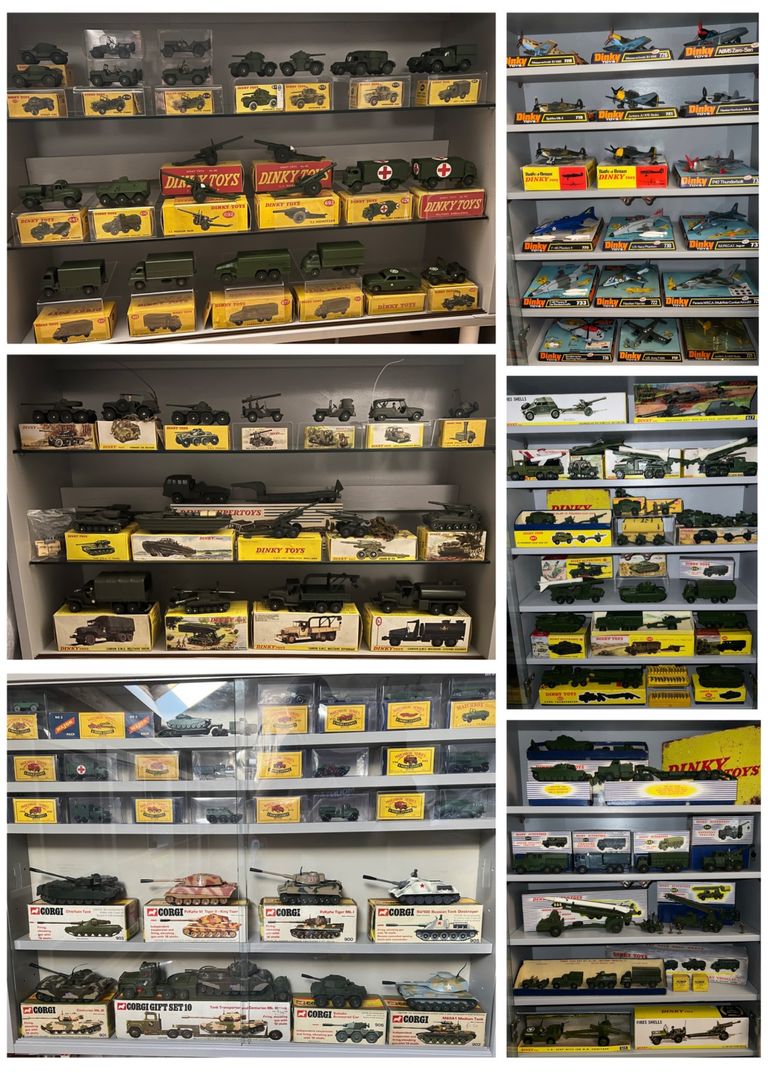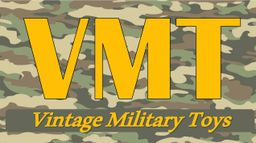Sourcing the best from the past
Where did it all begin?
A few years ago my father gave me a few of his childhood Dinky military toys in good, but played with condition. At that point my passion started, sourcing and collecting the very best military models that British toy manufacturers were producing when my father was a child. My interest then grew to include military models from my childhood bringing my collection range from the 1950’s through to the late 1970’s.
Sourcing mint or near mint boxed military diecast models has been a hobby of mine ever since and one that I would like to pass on through the generations as the workmanship that went into creating these diecast models has, in my opinion, never been matched since.
Please scroll down for an overview of what we sell or view our hundreds of mint obsolete toys in our online store.
What we specialise in
We mainly source and sell mint or near mint boxed military models from Dinky, Corgi, Matchbox and Britains LTD from the 1950’s up to and including the 1970’s. In addition to quality die-cast models we also source Vintage Action Man figures and accessories as well as vintage soldiers from Herald, Britains and Timpo dating from the 1950’s to the 1970’s.
These are broken down into sub-categories below with a brief history of each range. The majority of the range are available to purchase from our online store with free UK tracked postage on all orders over £49.99. International shipping is also available and welcome.
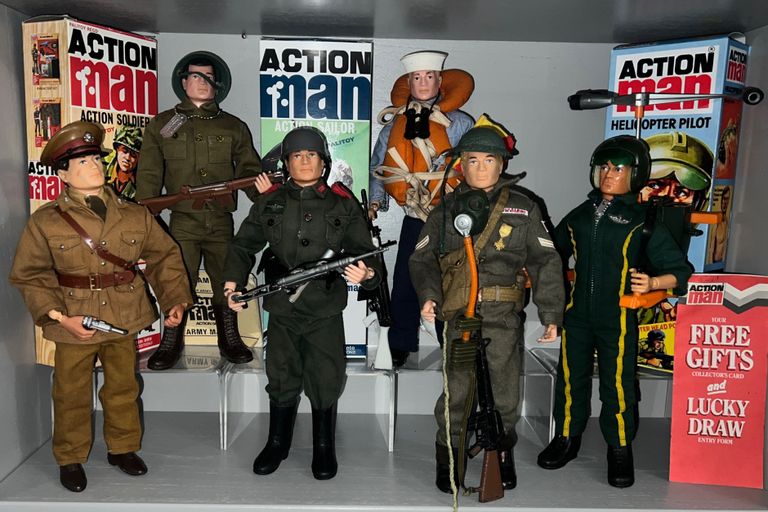
1960's-80's Vintage Action Man
Action Man is an action figure launched in Britain in 1966 by Palitoy as a licensed copy of Hasbro's American "movable fighting man", G.I. Joe.
Action Man was originally produced and sold in the United Kingdom and Australia by Palitoy Ltd of Coalville, Leicestershire from 1966 until 1984.
Action Man was developed with primarily British themes from 1970 onwards: military, adventurers, and sportsman, as Palitoy wanted to distinguish their product line from the U.S. counterpart.
Our collection focuses primarily on Military, Adventure figures and supporting accessories
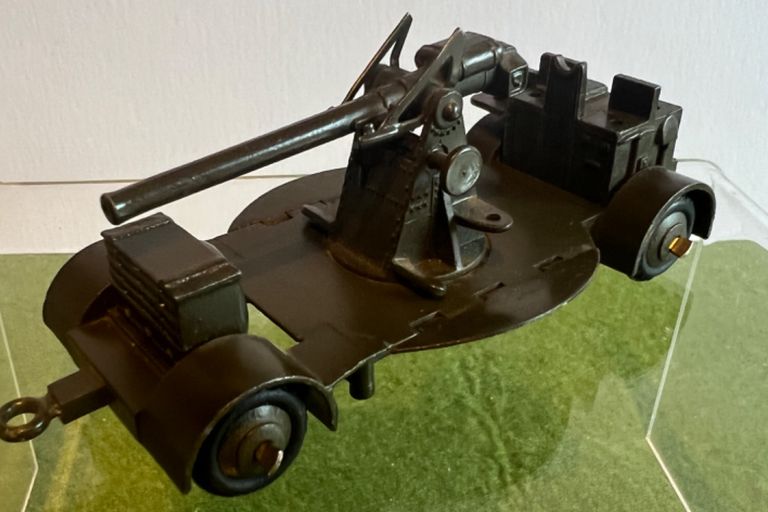
1930/40’s Dinky Military Toys
The first Dinky military range started appearing in around 1937, with a further range of additional pieces arriving in 1939 during the run-up to World War Two (1939-45). This gave a range of models that were also available grouped into four sets, with one larger (now very rare) master-set, the Dinky Toys Mechanised Army set 156, containing the complete range. Heavy promotion started seriously in November 1939 with the actual outbreak of war, with full-page adverts appearing in Meccano Magazine. Production ceased during the war as factories, such as Binns Road, were needed for the war effort. Military Dinky production started after the war in 1946 with the introduction of the Willys jeep 153a.
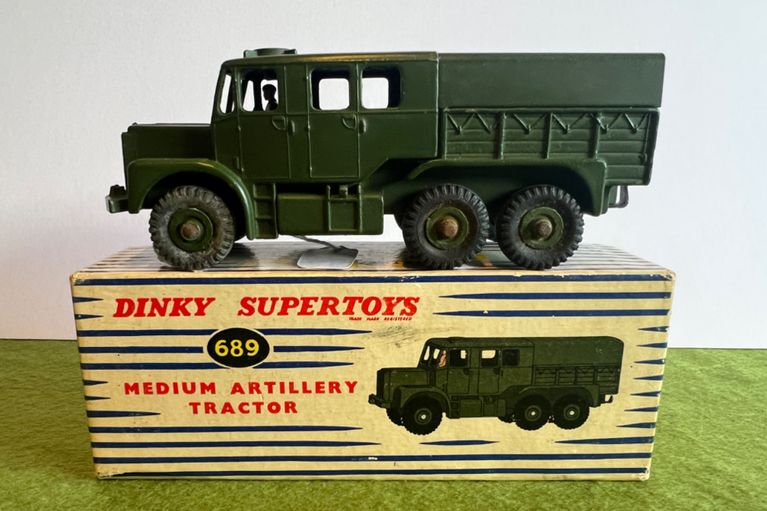
1950/60’s Dinky Military Toys
Production of new members of the military vehicles range didn't restart until 1953, with the appearance of the reintroduced 153a Jeep (renumbered 672), which was followed by a surge of new vehicles numbered in the "600"'s. These were modelled to 1:60 scale, and were scaled pretty consistently, as some of these vehicles would be placed in groups in close proximity, where any scale mismatches would be obvious. Some of the "600s" range were consequently pretty large, and emphatically in the "Dinky Supertoys" class.
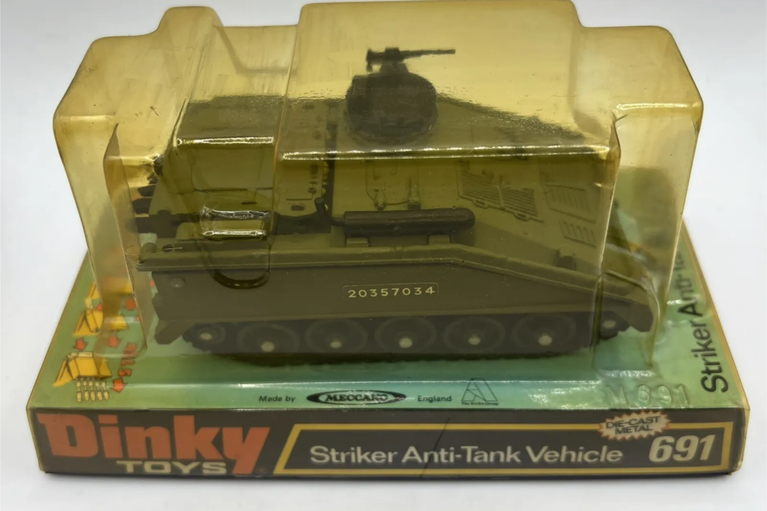
1970’s Dinky Military Toys
The third wave of Dinky military vehicles appeared in the 1970s, after Lines Brothers/Triang (who had bought Meccano Ltd) declared insolvency in ~1971 and their various manufacturing businesses were reorganised ... however, these 1970s pieces are stylistically different from their different scales to their variations in paint.
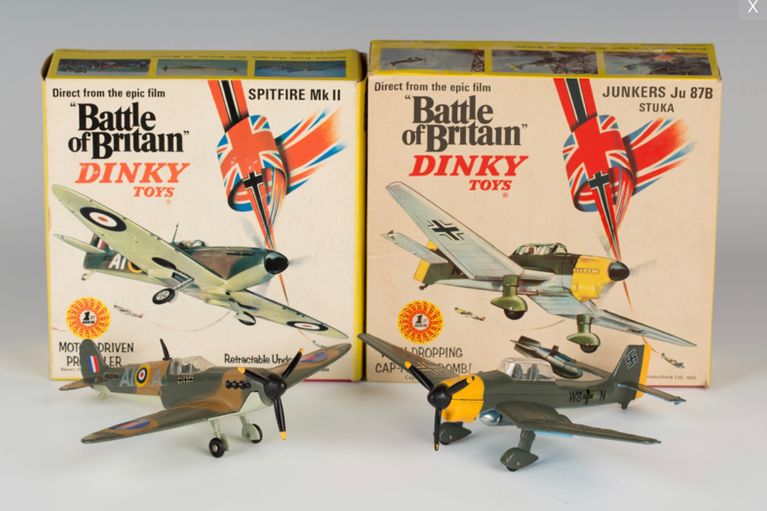
Vintage Dinky Military Planes
The October 1969 issue of Meccano Magazine duly showed a pair of sturdy new Dinky Toys with "Battle of Britain" film tie-in branding, a MkII Spitfire (No. 719) and a Junkers Ju 87b Stuka (No. 721), in a larger scale suitable for being gripped by a hand, with new features – transparent plastic cockpits, and retractable wheels and a motorised propellor for the Spitfire, and a droppable bomb for the Stuka that made a bang if you fitted it with a "cap".
These two new Dinkies then formed the basis of a brand new range of Dinky military aircraft through the 1970s that consisted of fighter planes and helicopters replacing all the earlier Dinky aircraft with the emphasis on features and play value.
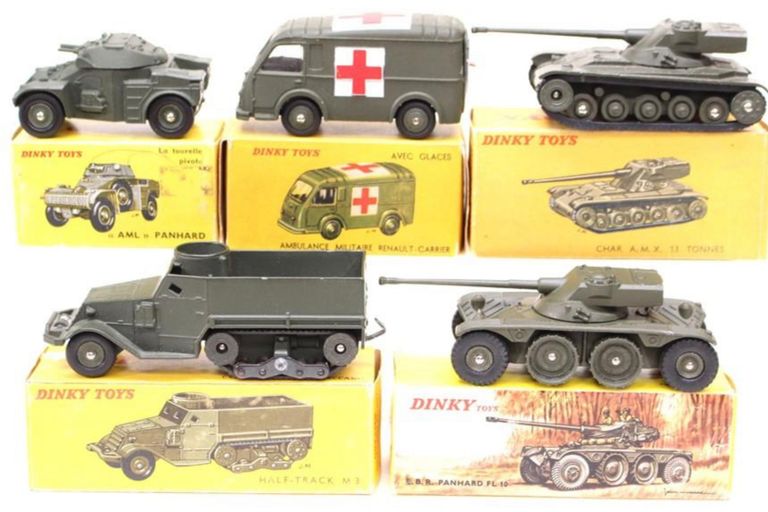
Military French Dinky - 1950’s >
In the early days (1929 onwards)French Dinky production consisted mainly of model ships and aeroplanes, with vehicles gradually increasing in number. During the Second World War the Meccano factories were commandeered by the invading Germans and used in the Nazi war effort.
By the 1950s the French Dinky Toys range had begun to diversify from that of the British parent company. The late 50’s saw the introduction of their Military range (800’s) and in my opinion produced some of the best models in Dinky’s history
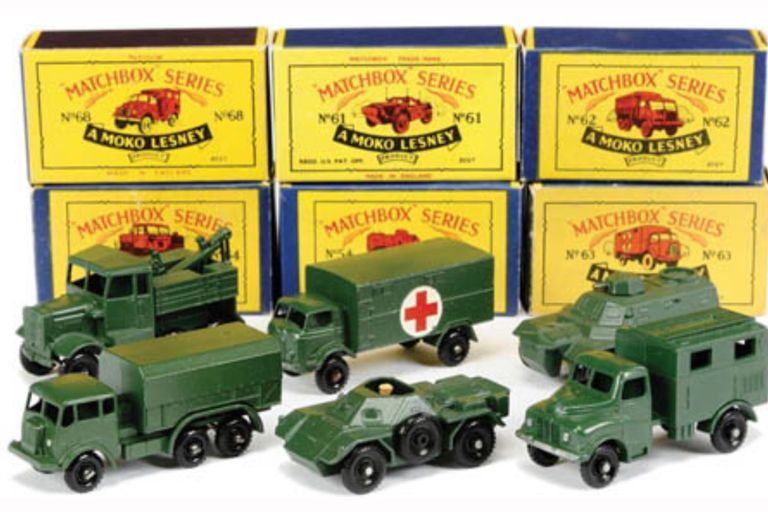
1950’s Military Lesney/Matchbox
In 1958 Matchbox realised that military vehicles might be a market. Thus they produced 3 vehicles later that year and a further 9 in 1959. That was an interesting output of 12 vehicles in total...but without any figures! Most of these military vehicles mentioned were also presented in Gift set G5 (with 8 vehicles).
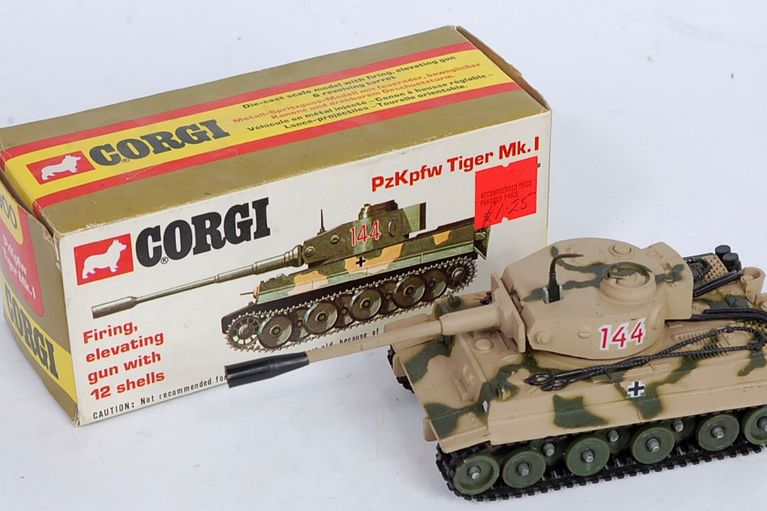
1970’s Military Corgi Toys
Corgi are synonymous for producing many military ranges such as vehicles and planes from the 1990’s all the way to the present day with many available in large numbers at reasonable prices.
My collection focuses purely from the small military range Corgi produced in the 1970’s which were manufactured in Hong Kong before the Sino-British Joint declaration in 1984.
These diecast models, again in my opinion where some of the best quality out there, rivalling Dinky in the 1970’s.
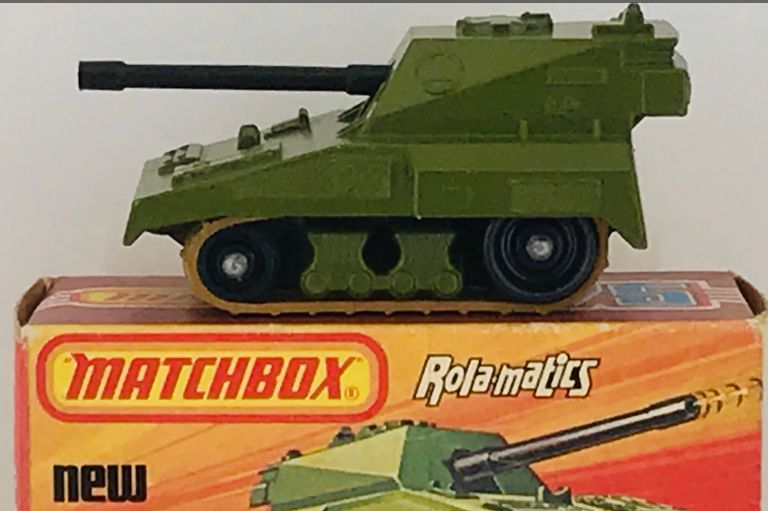
1970’s Matchbox Military Superfast
The range 'Superfast' was not a complete range in the true sense of the word, at least not like other Matchbox ranges. It was basically a branding name. The term Superfast was first used in 1969. In some years there was really a superfast range, with their own numbers. In other years the same vehicles were included in the normal MB regular series, or other ranges. Are you still following? Anyway, between 1974 and 1979 a total of 21 military vehicles reached the market, with some of the later models (1976>) produced in twin blister packs.
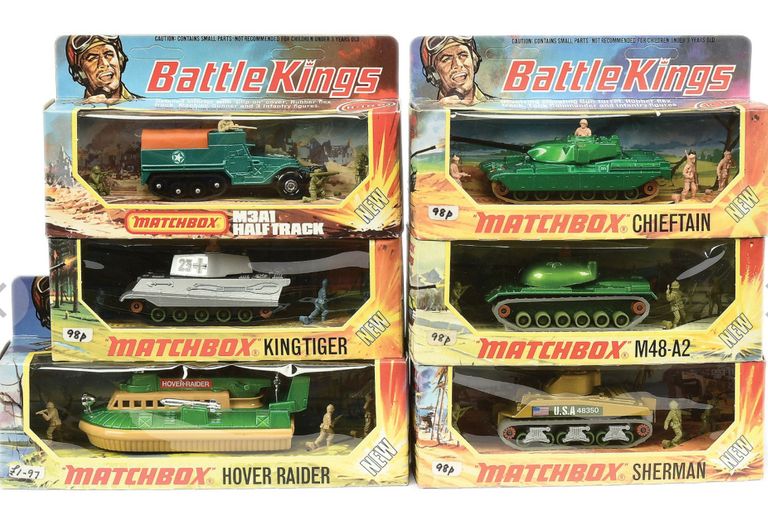
1970’s Matchbox BattleKings
After the initial military vehicles in the 1950/60’s Matchbox decided to think big. It seems that military toys did well in these years. As a consequence Matchbox started to produce two larger ranges with military vehicles and soldiers: the Battle Kings range along with the regular size vehicles in the Superfast range. Later, in 1976, they also produced the regular Matchbox soldier boxes, to accompany their large range of vehicles.
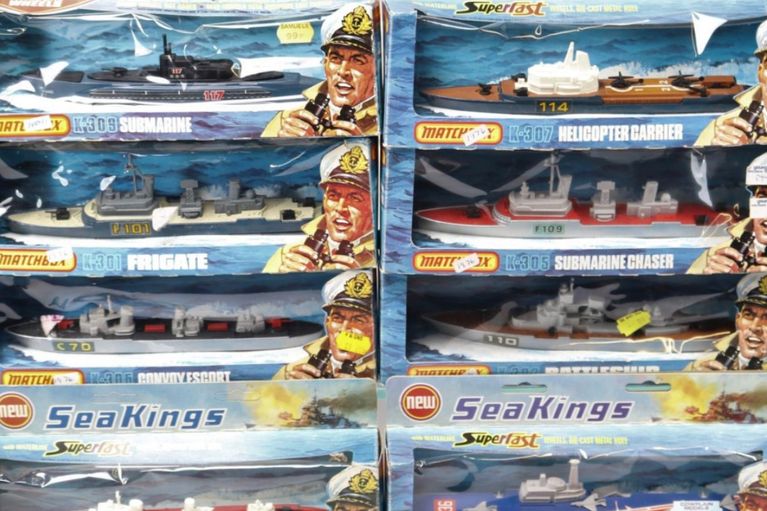
1970’s Matchbox Seakings Military Ships
To support the BattleKings range, Matchbox introduced the Sea Kings range of naval/military ships in 1975. The models featured cut-away hulls with small hidden ‘superfast’ wheels. The range of 9 ships and a harbour set were discontinued by 1981. Although now obsolete, mint ships in original unpunched boxes are becoming harder to come by.
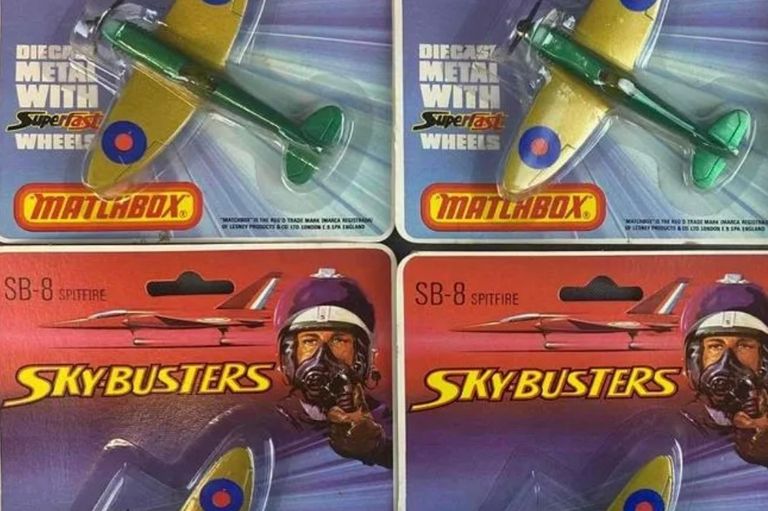
1970/80’s Matchbox Military Sky Busters
Lesney launched the Skybusters range in 1973, producing them with their other Matchbox toys in London, England. During the 1970s.
Skybusters combined military and commercial aircraft models at their earlier stage and are still being produced today.
We purely focus on the early military planes produced in England from 1973 - 1982 and in Macau from 1982-1989.
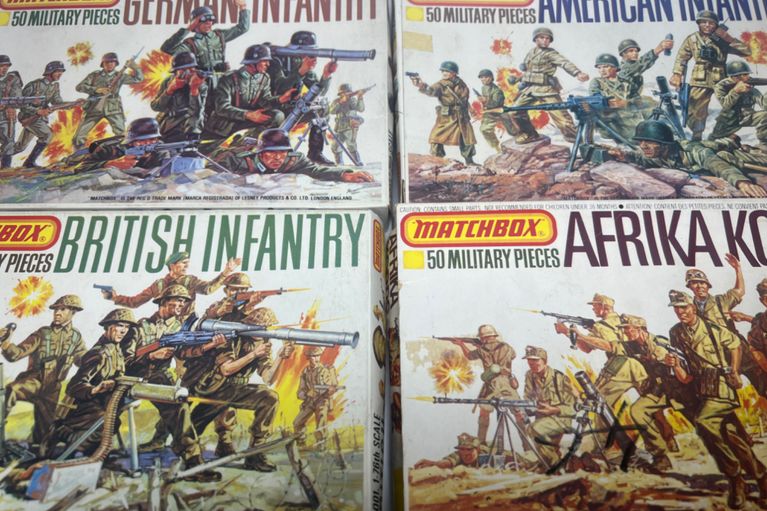
1970/80’s Matchbox Soldiers
Having made model cars and military vehicles for as long as anyone can remember, Matchbox began production of HO scale plastic soldiers in the Mid 1970’s. Though of a slightly smaller scale than the figures from Airfix etc., the good quality of the first sets boded well for a fine and successful range. Sadly production ceased after only nine sets, all of which matched their range of mainly World War II tanks and vehicles, but what there is of it is well worth a look.
As a British company, it is not surprising that they began with a set of WWII British infantry and tank crew.
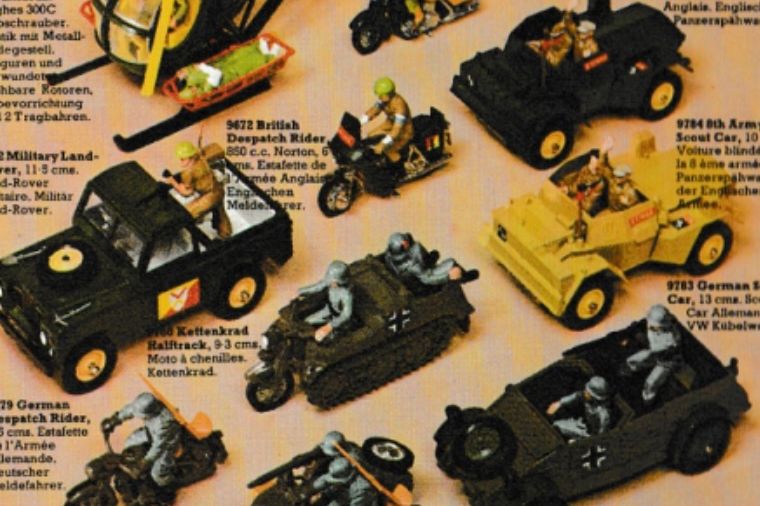
1950’s to 1970’s Britains LTD Military Toys
Founded in 1893, Britains LTD was established as a lead toy soldier manufacturer. Over the years the company has branched into farm and agricultural models as well as a vast range of Military Vehicles and plastic soldiers such as the Britain/Herald and Deetail ranges.
Driven by my fathers collection of 1953 British infantry soldiers, we specialise in sourcing mint vehicles, guns and soldiers from the 1950’s through to the late 1970’s.
We need your consent to load the translations
We use a third-party service to translate the website content that may collect data about your activity. Please review the details in the privacy policy and accept the service to view the translations.

